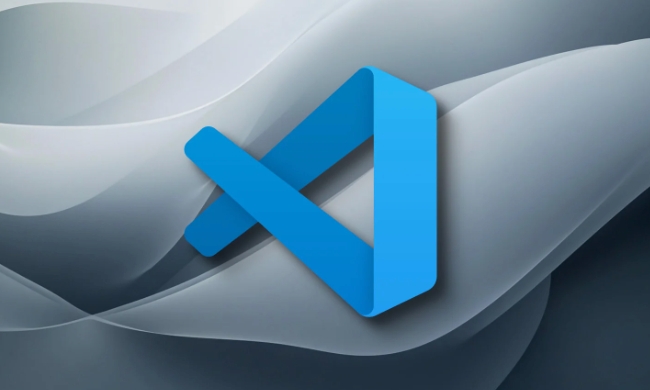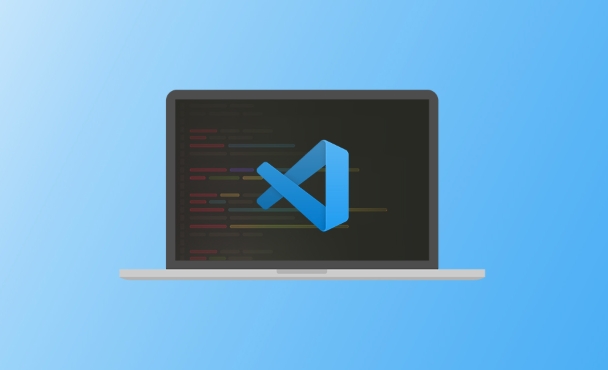How to use the interactive rebase editor in vscode?
Aug 01, 2025 am 12:28 AMStart by running git rebase -i HEAD~n in VS Code’s terminal to open the interactive rebase editor. 2. Ensure VS Code is set as the default Git editor with git config --global core.editor "code --wait". 3. In the rebase file, modify commands like pick to reword, squash, drop, or edit, and reorder commits as needed. 4. Save and close the file to trigger follow-up prompts for new commit messages when using reword or squash, then save and close again. 5. If conflicts arise, resolve them using VS Code’s conflict markers, stage changes with git add, and continue with git rebase --continue, or abort with git rebase --abort if necessary. Always backup your branch before rebasing and avoid rebasing already-pushed commits on shared branches, ensuring a smoother history cleanup process directly within VS Code’s intuitive interface.

Using the interactive rebase editor in VS Code is a convenient way to clean up your commit history directly from your editor. VS Code integrates with Git and supports launching the interactive rebase tool through the built-in terminal or via Git extensions. Here’s how to use it effectively.

? 1. Start an Interactive Rebase
To begin an interactive rebase, open the integrated terminal in VS Code (Ctrl `` orView > Terminal`), then run:
git rebase -i HEAD~n
Replace n with the number of recent commits you want to edit. For example:

git rebase -i HEAD~3
This opens the interactive rebase editor.
By default, Git uses the configured editor. If you’ve set VS Code as your default Git editor (recommended), it will open right inside VS Code.
? 2. Set VS Code as Your Default Git Editor
To make sure the rebase editor opens in VS Code, run:
git config --global core.editor "code --wait"
codelaunches VS Code.--waittells Git to wait until you close the file before continuing.
Now, when you run git rebase -i, a file will open in VS Code showing your recent commits like:
pick abc1234 Add login feature pick def5678 Fix button alignment pick ghi9012 Update README
? 3. Edit the Rebase File
In the rebase file, you can:
- Reorder commits by moving lines up/down
- Reword commit messages by changing
picktoreword - Squash commits by changing
picktosquashors - Drop commits by changing
picktodropor deleting the line - Edit a commit (e.g., to amend changes) by using
edit
Example:
pick abc1234 Add login feature reword def5678 Fix button alignment squash ghi9012 Update README
After saving and closing the file (Ctrl S, then close tab), VS Code will guide you through the next steps if needed (e.g., entering a new commit message for a squash or reword).
? 4. Handle Follow-Up Prompts
If you used reword or squash, Git will open another temporary file in VS Code for you to:
- Edit the new commit message
- Save and close (
Ctrl S, then close)
VS Code will show a notification like “Waiting for your editor…” — just save and close the file, and the rebase continues.
? 5. Resolve Conflicts (If Any)
If a conflict occurs during the rebase:
- VS Code’s Source Control view will show conflicting files.
- Use the inline conflict markers to resolve them.
- After resolving, stage the file with
git add <file>. - Continue the rebase:
git rebase --continue
If you get stuck:
git rebase --abort
Pro Tips
- Always backup your branch before rebasing (e.g.,
git checkout -b feature/mybranch-backup). - Use
git log --onelineto count commits before rebasing. - If you're working on a shared branch, avoid rebasing commits that have already been pushed (unless you're certain no one else is using them).
Using the interactive rebase in VS Code streamlines the process with a familiar interface, syntax highlighting, and easy file navigation. Just make sure code --wait is set as your editor, and you're good to go.
Basically, it's Git’s rebase workflow — but with a much nicer editor experience.
The above is the detailed content of How to use the interactive rebase editor in vscode?. For more information, please follow other related articles on the PHP Chinese website!

Hot AI Tools

Undress AI Tool
Undress images for free

Undresser.AI Undress
AI-powered app for creating realistic nude photos

AI Clothes Remover
Online AI tool for removing clothes from photos.

Clothoff.io
AI clothes remover

Video Face Swap
Swap faces in any video effortlessly with our completely free AI face swap tool!

Hot Article

Hot Tools

Notepad++7.3.1
Easy-to-use and free code editor

SublimeText3 Chinese version
Chinese version, very easy to use

Zend Studio 13.0.1
Powerful PHP integrated development environment

Dreamweaver CS6
Visual web development tools

SublimeText3 Mac version
God-level code editing software (SublimeText3)
 Laravel environment construction and basic configuration (Windows/Mac/Linux)
Apr 30, 2025 pm 02:27 PM
Laravel environment construction and basic configuration (Windows/Mac/Linux)
Apr 30, 2025 pm 02:27 PM
The steps to build a Laravel environment on different operating systems are as follows: 1.Windows: Use XAMPP to install PHP and Composer, configure environment variables, and install Laravel. 2.Mac: Use Homebrew to install PHP and Composer and install Laravel. 3.Linux: Use Ubuntu to update the system, install PHP and Composer, and install Laravel. The specific commands and paths of each system are different, but the core steps are consistent to ensure the smooth construction of the Laravel development environment.
 Environment configuration for running Ruby code in VSCode
May 15, 2025 pm 09:30 PM
Environment configuration for running Ruby code in VSCode
May 15, 2025 pm 09:30 PM
Configuring the Ruby development environment in VSCode requires the following steps: 1. Install Ruby: Download and install from the official website or using RubyInstaller. 2. Install the plug-in: Install CodeRunner and Ruby plug-ins in VSCode. 3. Set up the debugging environment: Install the DebuggerforRuby plug-in and create a launch.json file in the .vscode folder for configuration. This way, you can write, run, and debug Ruby code efficiently in VSCode.
 Use VSCode to perform version fallback operation of code
May 15, 2025 pm 09:42 PM
Use VSCode to perform version fallback operation of code
May 15, 2025 pm 09:42 PM
In VSCode, you can use Git for code version fallback. 1. Use gitreset--hardHEAD~1 to fall back to the previous version. 2. Use gitreset--hard to fall back to a specific commit. 3. Use gitrevert to safely fall back without changing history.
 Configure VSCode and GitHub for code synchronization
May 20, 2025 pm 06:33 PM
Configure VSCode and GitHub for code synchronization
May 20, 2025 pm 06:33 PM
Configuring VSCode to synchronize code with GitHub can improve development efficiency and team collaboration. First, install the "GitHubPullRequestsandIssues" and "GitLens" plugins; second, configure the GitHub account; then clone or create a repository; finally, submit and push the code to GitHub.
 How to manually install plugin packages in VSCode
May 15, 2025 pm 09:33 PM
How to manually install plugin packages in VSCode
May 15, 2025 pm 09:33 PM
The steps to manually install the plug-in package in VSCode are: 1. Download the .vsix file of the plug-in; 2. Open VSCode and press Ctrl Shift P (Windows/Linux) or Cmd Shift P (Mac) to call up the command panel; 3. Enter and select Extensions:InstallfromVSIX..., then select .vsix file and install. Manually installing plug-ins provides a flexible way to install, especially when the network is restricted or the plug-in market is unavailable, but attention needs to be paid to file security and possible dependencies.
 Best Practices for Writing JavaScript Code with VSCode
May 15, 2025 pm 09:45 PM
Best Practices for Writing JavaScript Code with VSCode
May 15, 2025 pm 09:45 PM
Best practices for writing JavaScript code in VSCode include: 1) Install Prettier, ESLint, and JavaScript (ES6) codesnippets extensions, 2) Configure launch.json files for debugging, and 3) Use modern JavaScript features and optimization loops to improve performance. With these settings and tricks, you can develop JavaScript code more efficiently in VSCode.
 Solve the coding settings and garbled problems of VSCode when dealing with multilingual projects
May 22, 2025 pm 10:57 PM
Solve the coding settings and garbled problems of VSCode when dealing with multilingual projects
May 22, 2025 pm 10:57 PM
VSCode solves the problems of multilingual project coding and garbled code including: 1. Ensure that the file is saved with correct encoding and use the "redetection encoding" function; 2. Set the file encoding to UTF-8 and automatically detect the encoding; 3. Control whether to add BOM; 4. Use the "EncodingConverter" plug-in to convert encoding; 5. Use the multiple workspace functions to set encoding for different sub-projects; 6. Optimize performance and ignore unnecessary file monitoring. Through these steps, the coding problem of multilingual projects can be effectively dealt with.
 Experience in participating in VSCode offline technology exchange activities
May 29, 2025 pm 10:00 PM
Experience in participating in VSCode offline technology exchange activities
May 29, 2025 pm 10:00 PM
I have a lot of experience in participating in VSCode offline technology exchange activities, and my main gains include sharing of plug-in development, practical demonstrations and communication with other developers. 1. Sharing of plug-in development: I learned how to use VSCode's plug-in API to improve development efficiency, such as automatic formatting and static analysis plug-ins. 2. Practical demonstration: I learned how to use VSCode for remote development and realized its flexibility and scalability. 3. Communicate with developers: I have obtained skills to optimize VSCode startup speed, such as reducing the number of plug-ins loaded at startup and managing the plug-in loading order. In short, this event has benefited me a lot and I highly recommend those who are interested in VSCode to participate.







